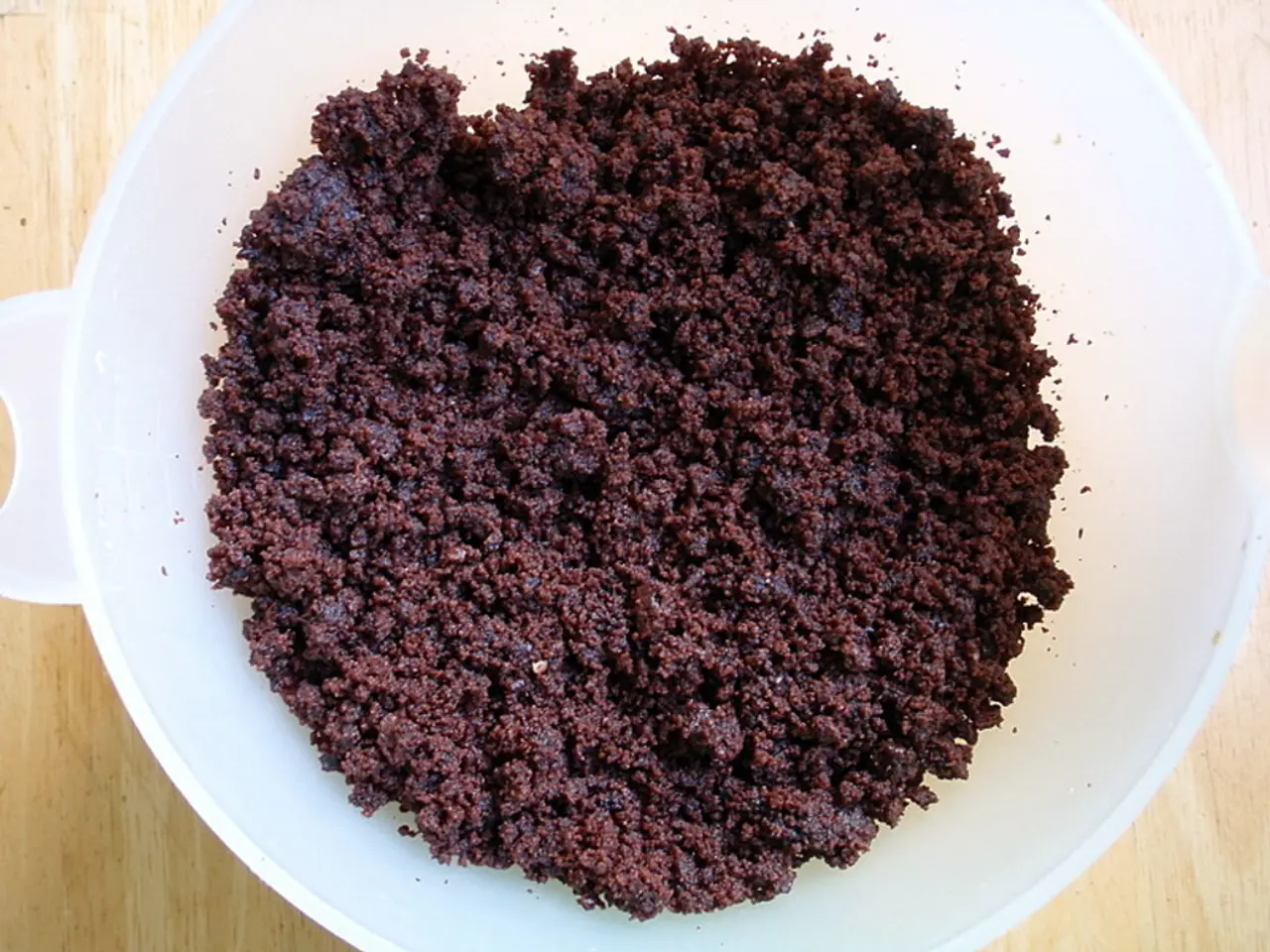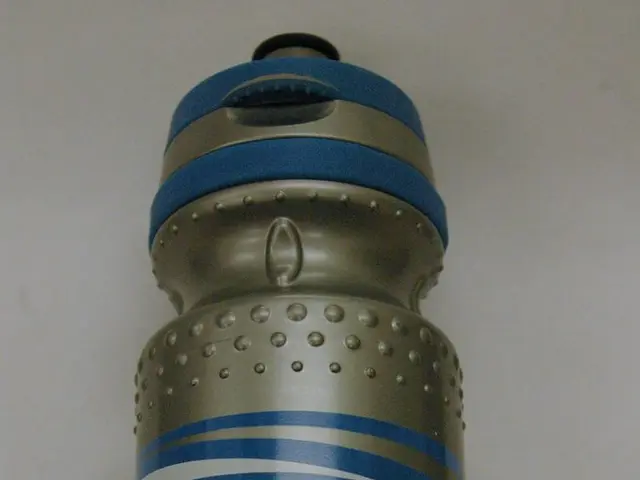Lactose Intolerance Diagnostic Methods: A Breakdown of Various Kinds
In the world of paediatric healthcare, diagnosing lactose intolerance in infants and young children is a common challenge. Unlike the widely used hydrogen breath test, doctors primarily rely on symptom history and stool acidity tests to make a diagnosis in this age group.
The hydrogen breath test, while reliable, can be difficult to perform accurately in very young children or infants. This test involves measuring hydrogen in a child's breath after lactose ingestion, a process that may not yield accurate results due to the children's immature digestive systems. For infants and very young children, stool acidity testing is a common alternative. This test detects acid produced by fermentation of unabsorbed lactose in the colon by analyzing a stool sample for lactic acid and other acids.
When hydrogen breath tests are not feasible, doctors turn to other non-hydrogen breath test methods. These include the milk challenge, blood or saliva tests, genetic testing, intestinal biopsy, and lactase activity measurement. The milk challenge involves eliminating lactose-containing foods for several days, then reintroducing milk and observing for symptoms such as diarrhea, bloating, or gas. Blood or saliva tests measure blood glucose or perform genetic testing after lactose ingestion to detect lactose intolerance or lactose gene variants, but these methods are less frequently used for infants. Genetic testing can identify gene variants associated with lactose intolerance but does not confirm current intolerance in the patient. Intestinal biopsy with lactase activity measurement is invasive and rarely used except during other diagnostic procedures.
In summary, for infants and young children, the main diagnostic approaches used by doctors when non-hydrogen breath test methods are preferred are stool acidity testing and milk challenge with careful symptom monitoring. Genetic tests and blood glucose tests may also be used but are less common in this age group.
It's important to note that lactose intolerance is relatively common, with approximately one-third of the population in the United States having lactose intolerance, according to the National Institute of Diabetes and Digestive and Kidney Diseases (NIDDK). If you suspect your child may have lactose intolerance, a food diary and elimination diet can help indicate this at home.
References:
- Stool acidity test is commonly used in infants and young children for lactose intolerance diagnosis.
- Milk challenge test based on symptom observation after lactose reintroduction.
- Blood, saliva, and genetic tests exist but are less commonly used in young children.
- Hydrogen breath test is standard but may be challenging in infants and thus replaced by stool test.
- Approximately one-third of the population in the United States has lactose intolerance, according to the National Institute of Diabetes and Digestive and Kidney Diseases (NIDDK).
- A glucose blood test is another type of lactose intolerance test, where a medical professional takes blood samples and measures the amount of glucose in a person's blood.
- Types of lactose intolerance tests include hydrogen breath tests, blood glucose tests, and stool acidity tests.
- For a hydrogen breath test, a person with suspected lactose intolerance drinks a liquid that contains lactose and then breathes into a balloon-like container that measures the amount of hydrogen in the breath.
- Home test kits for lactose intolerance tests, including hydrogen breath tests and glucose blood tests, are available for purchase.
- Stools with a low pH indicate high acidity, which can be a sign of carbohydrate malabsorption, but it is not specific to lactose.
- In a food diary, a person should note everything they eat or drink for a week, including the time, snacks, beverages, and symptoms.
- During an elimination diet, a person should cut out all milk, dairy products, and account for processed and packaged foods, prescription medicines, and over-the-counter remedies.
- Before taking a hydrogen breath test, most doctors will recommend fasting, avoiding antibiotics, not eating fermentable foods, and avoiding laxatives and promotility medications for a certain period.
- Alternative sources of calcium and vitamin D, both nutrients found in dairy products, include leafy green vegetables, almonds, canned sardines, and fortified orange juice.
- There are products containing lactase, the enzyme that breaks down lactose, which can help reduce the chance of experiencing symptoms.
- A healthcare professional, such as a dietitian, can help manage the safety of an elimination diet.
- A stool acidity test measures the acidity, or pH, of a stool sample.
- People who have difficulty digesting lactose can manage their symptoms by reducing the amount of lactose they consume.
- A food diary and elimination diet can help indicate if a person has trouble digesting lactose at home.
- For a glucose blood test, a person drinks a liquid containing a known amount of lactose, and doctors take blood samples at regular intervals to measure the amount of glucose in the blood.
- Lactose intolerance can be managed by reducing or eliminating all lactose from the diet.
- Doctors may conduct a physical exam to check for bloating or tenderness in the abdomen.
- The stool acidity test is an alternative method for assessing lactose intolerance in infants and young children.
- In the field of health-and-wellness and fitness-and-exercise, management of lactose intolerance involves reducing or eliminating dairy products from one's diet, and alternative sources of calcium and vitamin D can be found in leafy green vegetables, almonds, canned sardines, and fortified orange juice.
- For a hydrogen breath test, a person with suspected lactose intolerance drinks a liquid that contains lactose and then breathes into a container that measures the amount of hydrogen in the breath, and before taking the test, most doctors will recommend fasting, avoiding antibiotics, not eating fermentable foods, and avoiding laxatives and promotility medications for a certain period.
- Home test kits for lactose intolerance tests, including hydrogen breath tests and glucose blood tests, are available for purchase, and a food diary and elimination diet can help indicate at home if a person has trouble digesting lactose, similar to how mental-health self-monitoring techniques can help track one's mental state.
- Science has developed several types of lactose intolerance tests, including hydrogen breath tests, blood glucose tests like the one in the glucose blood test mentioned, and stool acidity tests, with the stool acidity test being an alternative method for assessing lactose intolerance in infants and young children.
- At the intersection of healthcare and science, genetics can play a role in lactose intolerance, as genetic testing can identify gene variants associated with lactose intolerance but does not confirm current intolerance in the patient, and such tests may be less frequently used for infants.




